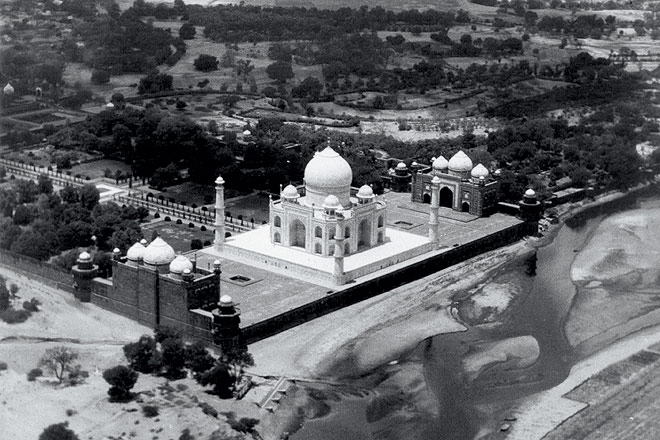“The Taj truly is…a poem…It is not only a pure architectural type, but also a creation, which
When the Second World War brought the American Air Force into Indian skies Glenn S. Hensley, was a young photographer participating in the surveillance of the Japanese in Burma. He was based in Calcutta, the operational headquarters and the main air supply post for the entire CBI (China Burma India) theatre. During his off-duty time Hensley captured a number of locations around India, including the Taj, in this panoramic shot. The original caption to the picture is rather understated: “As the plane circles the Taj, the view is towards the northwest. The airfield is visible upper left side. MacDonell Park is just beyond the Taj grounds.”
The silvery gleam of the Taj, which Taylor talked about in such ecstatic tones and Hensley captured in series of photographs, is also, a perfect marker from the air and a dead give-away to enemy pilots in wartime. The understandable but unsightly tradition of camouflaging the Taj in wartime had its bizarre beginnings in World War II, when the monument was briefly covered in scaffolding to give the impression that it was a stockpile of bamboo. The camouflage (with green cloth) returned in the 1971 war and the Kargil conflict. From the air, as from the ground, the dazzling domes of the Taj have always, it seems, been the centre of attraction on the dusty plains of north India.
Taj Mahal
Time Traveller
Leave a Reply
You must be logged in to post a comment.


